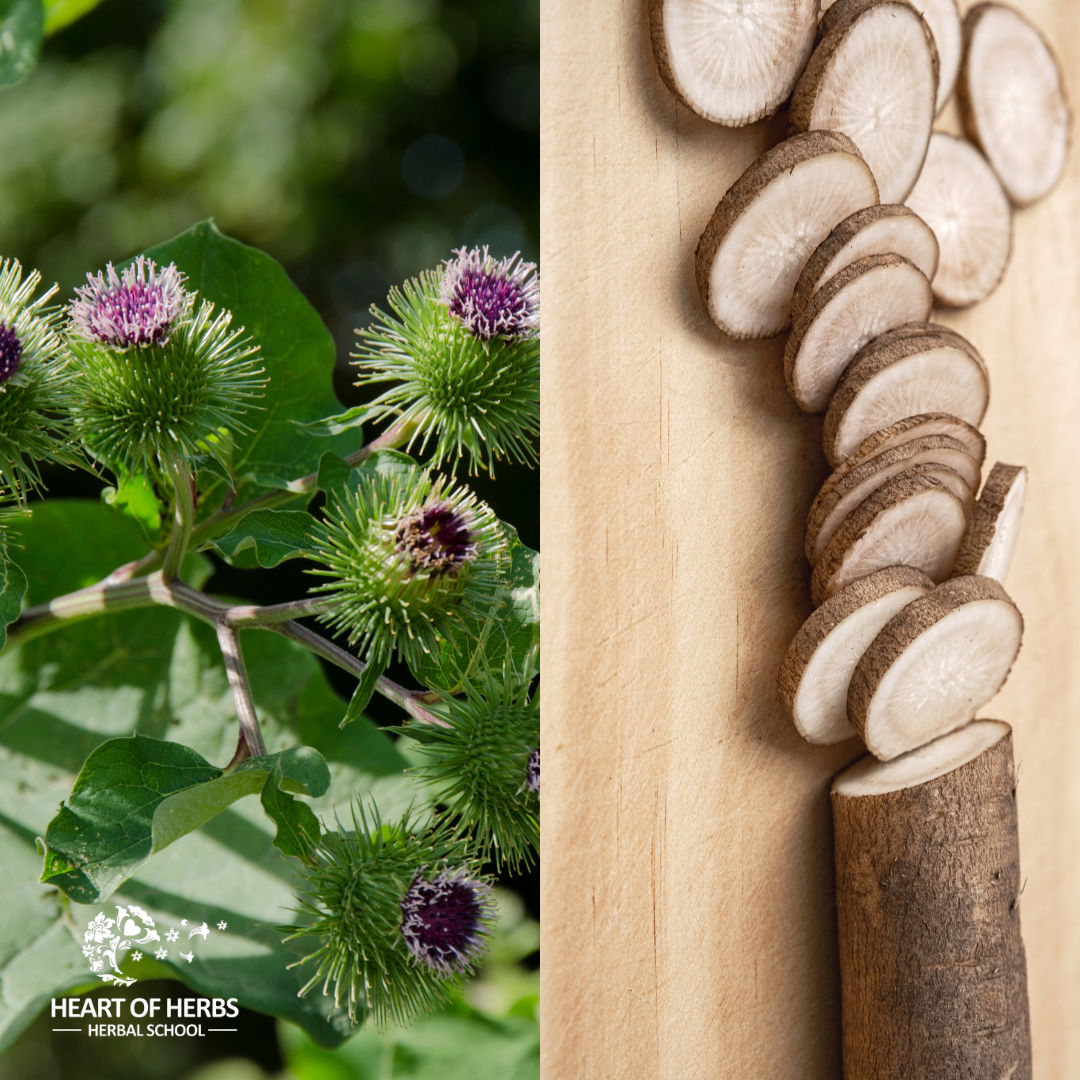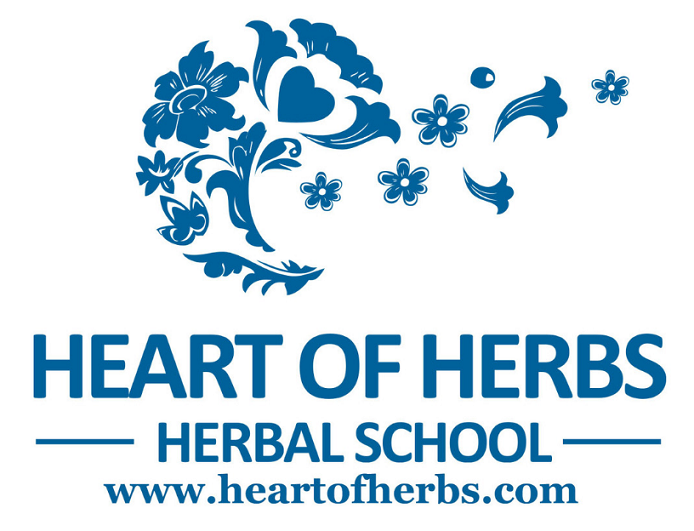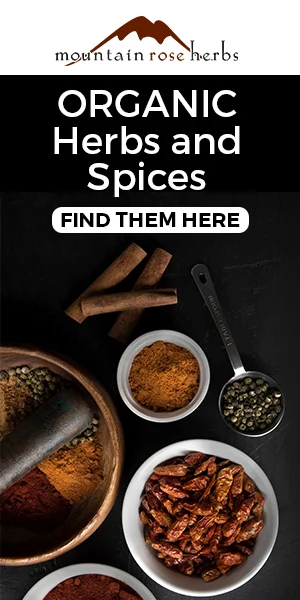Backyard Apothecary: Burdock (Arctium lappa, Arctium minus) – Uses, Safety, Identification, and Habitat
Burdock (Arctium lappa and Arctium minus) is a powerful herb that often grows unnoticed in backyards, gardens, and along roadsides. With its large, heart-shaped leaves and prickly burrs, Burdock has a long history in traditional medicine across Europe, Asia, and North America. This plant, known for its detoxifying effects, is a must-have in any home apothecary. Let’s explore how to identify Burdock, its uses, safety considerations, and where you can find it.

How to Identify Burdock
You can easily spot Burdock by its distinctive features. In its first year, Burdock grows a rosette of large, heart-shaped leaves that can be up to 2 feet long. These leaves are green on top and whitish underneath with a slightly fuzzy feel. During the second year, the plant sends up a tall flowering stalk that can reach 6 feet in height.
You’ll notice Burdock’s small, purple or pink, thistle-like flowers surrounded by hooked green bracts that turn into familiar prickly burrs. These burrs stick to anything they touch, helping the plant spread its seeds. Burdock’s long, deep taproot is dark brown outside and white inside, which is the part often harvested for medicinal use.
Where Burdock Grows
Burdock grows well in many places, especially in disturbed soils. You can find it in sunny fields, meadows, roadsides, gardens, and along pathways. It also grows at the edges of woodlands where it can get plenty of sunlight.
Medicinal Uses of Burdock
Burdock offers many health benefits, making it a favorite in herbal medicine:
- Detoxification and Blood Purification: Burdock helps cleanse the body by supporting the liver and kidneys. Herbalists often use Burdock root in detox teas to help flush out toxins and improve overall health.
- Digestive Health: Burdock root contains inulin, a type of fiber that supports digestion and feeds healthy gut bacteria. It can ease digestive problems like constipation, bloating, and indigestion.
- Skin Health: People often use Burdock to treat skin conditions such as acne, eczema, and psoriasis. Its anti-inflammatory properties can reduce skin irritation when taken internally or applied directly.
- Anti-Inflammatory and Antioxidant: Burdock contains antioxidants that fight inflammation and oxidative stress, which can help manage arthritis and other inflammatory conditions.
- Urinary Health: As a mild diuretic, Burdock helps increase urine flow, which can aid in clearing the urinary tract and supporting kidney health.
- Immune Support: Burdock boosts the immune system, helping your body fight infections and maintain overall wellness.
- Cancer Support: Some studies suggest Burdock may slow cancer cell growth, especially due to its detoxifying properties. It’s often used in holistic cancer care for its potential to support the body’s defenses.
Safety and Precautions
Burdock is generally safe, but keep a few things in mind:
- Allergies: If you’re allergic to daisies, ragweed, or other members of the Asteraceae family, you might also react to Burdock.
- Pregnancy and Breastfeeding: Use caution when pregnant or breastfeeding, as safety data is limited. Always consult a healthcare provider first.
- Drug Interactions: Because Burdock acts as a diuretic, it can interact with diuretic medications. Monitor for dehydration if you’re taking both.
- Blood Sugar: Burdock can lower blood sugar, so if you have diabetes, keep a close eye on your levels.
- Safe Harvesting: When harvesting Burdock, make sure to collect from areas free of pesticides, herbicides, and pollution. Avoid harvesting near busy roads.
How to Use Burdock
You can use Burdock in a variety of ways:
- Tea or Decoction: Simmer 1-2 teaspoons of dried Burdock root in water for 10-15 minutes. Strain and drink up to three cups a day to support detoxification.
- Tincture: Use Burdock tinctures for a concentrated dose. Depending on your needs, take 25-60 drops one to three times a day.
- Topical Use: Make a poultice or add Burdock to salves for skin issues like rashes and irritation.
- Culinary Use: Burdock root, called “gobo” in Japanese cuisine, is also a nutritious vegetable. It can be added to soups, stir-fries, or stews.
Additionally, Burdock is a versatile herb with a wide range of health benefits. It supports detoxification, boosts immune health, improves digestion, and helps manage skin conditions. With the right identification and precautions, Burdock is a valuable addition to your backyard apothecary. Remember to consult with a healthcare provider if you’re new to using Burdock or if you have health concerns, ensuring that you use this powerful plant safely and effectively.
Disclaimer
Disclaimer Blog
The information presented on the Heart of Herbs Herbal School/Demetria Clark websites is for educational purposes only. Heart of Herbs Herbal School/Demetria Clark Education LLC makes neither medical claims nor intends to diagnose or treat medical conditions. Links to external sites are for informational purposes only. Heart of Herbs Herbal School/Demetria Clark neither endorses them nor is in any way responsible for their content. Readers must do their own research regarding the safety and usage of any herbs, recipes, or supplements.
Affiliate Disclosure
Some posts contain affiliate links. When you click on these and make a purchase the cost is the same for you, but we earn a small commission that helps me to provide scholarships to students. We only promote products that we know our clients have liked themselves.
Heart of Herbs Herbal School is a Amazon affiliate. As an Amazon Associate, we earn from qualifying purchases.

